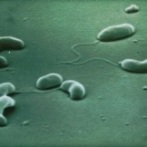Campylobacter detection medium now available

A culture medium has been developed to distinguish quicker between Campylobacter species, and is now being distributed, announces the USDA’s ARS.
Campy-Cefex, the new culture medium, is specifically developed to detect and differentiate C. jejuni and C. coli, which are two major causes of food borne illness.
The medium was developed in 1987 by ARS microbiologist Norman Stern, who was working at the ARS Poultry Microbiological Safety Research Unit (PMSRU) in Athens, Ga. He went to Poland to work with researchers Boleslaw Wojton and Kris Kwiatek at the Veterinary Research Institute in Pulawy, Poland. Together, they worked to characterise Campylobacter contamination in poultry.
At that time, detection of Campylobacter relied on the use of new antibiotics that were unavailable in Poland. In developing the new medium, Stern used cycloheximide and cefoperazone, which were the only two he had brought to Poland. Howeber, these two compounds provided superior efficacy, for both growing Campylobacter in a culture and for repressing the growth of most other microorganisms. Consequently, it was determined by he researchers that the additional antibiotics previously employed with other Campylobacter media were not needed.
In 1999, the Campy-Cefex culture medium was patented . Licensing agreements to produce the new culture medium have since been entered into with Becton Dickinson and Company, Franklin Lakes, N.J., and Neogen Corporation, Lansing, Mich.
Related links:













